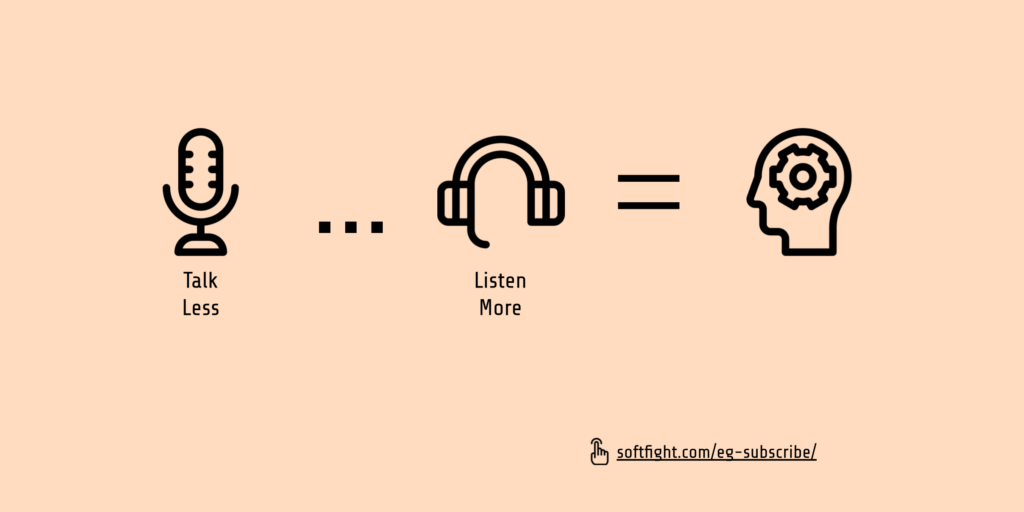You’ve probably heard the saying that people don’t like to be sold to, they like to buy things.
We can easily imagine what this looks like in a shopping mall.
What does it mean in a B2B software context?

Another sales anecdote you must have heard, most probably at a sales training or at a conference, is the story about the guy who wants to hang a painting on the wall and goes to a DIY store to buy something for that.
The question for the salesperson in the store is: what does this customer need?
The easy answer: a drill.
The correct answer: a hole in the wall.
For which the solution might be different, depending on many factors, one of which is the type of wall he has:
- masonry wall: a drill and an automatic drilling machine
- wooden wall: a nail and a hammer
- plaster wall: a screwdriver and a drywall screw
What software companies sell
If you visit the websites of many software services companies, you will usually find a long and diverse list of services.
Sometimes you will also find benefits and reasons to choose that company as a partner.
We can put all these under the umbrella of “What vendors are selling”
- Full Project Delivery
- Team Extension
- Dedicated Team
- Software Development
- Quality Assurance Services
- Support and Maintenance
- UX
- MVP development
- Product Design Sprint
- Proof of Concept Sprint
- Consulting
- IT Strategy Workshop
- Discovery Workshop
- Software Audit
The problem is that this is not what your customers are buying.
Yes, they might use this language in their RFPs and in the emails they send you.
They will request that the project proposal makes reference to these services.
But this is not what is driving their decision making process.
What clients are buying
Time to market
Who: Founders working on the first version of their product.
How to recognize it: They ask a lot of questions about the timeline – how long does it take to implement this? How quickly can we have a working prototype? Why does it take so long? Can’t you put more people on this project, to finish faster?
Less stress
Who: Programme Managers in large companies
How to recognize it: they are looking for experience and guaranteed outcomes. They have probably worked with unreliable vendors or with internal teams that did not deliver. For this new project, they want to make sure that they work with a team that can deliver. They might also have some technical challenges that need to be tackled. So they are prepared to pay high, premium prices for high quality services.
Access to expertise
Who: CTO’s of scaleups
How to recognize it: They have very specific demands in terms of the technology stack or infrastructure requirements. Their project brief is well documented and requires experts working at their best.
Business change (increase revenues, reduce costs, manage risks)
Who: Executives in Medium and Large companies
How to recognize it: They talk about ROI and business cases. They try to quantify all variables in the project and are outcome-oriented.
“Nobody ever got fired for choosing IBM”
Who: Some people just want to work with the best vendor on the market. Typically they have a high-paying job in large companies
How to recognize it: They usually like to brag about this.
There are still other reasons people choose certain vendors.
I’ve seen situations where the main decision maker was first of all interested in their career advancement and what the project would do for their prospects of getting a promotion.
I’ve also seen situations where the decision makers were mainly driven by their tendency to validate their beliefs – every information and datapoint they would receive was interpreted in a way to confirm what they already knew.
Sometimes this can help you as a vendor trying to sell them. Especially if you can recognise it and use it to your advantage.
And other times it can make it almost impossible to win the project. The sooner you recognize this, the better.
WHAT THIS MEANS FOR YOU
Most of your time talking to customers has to be spent not talking to them. Listen instead.
To understand what they are really buying, you have to spend a lot more time listening.

